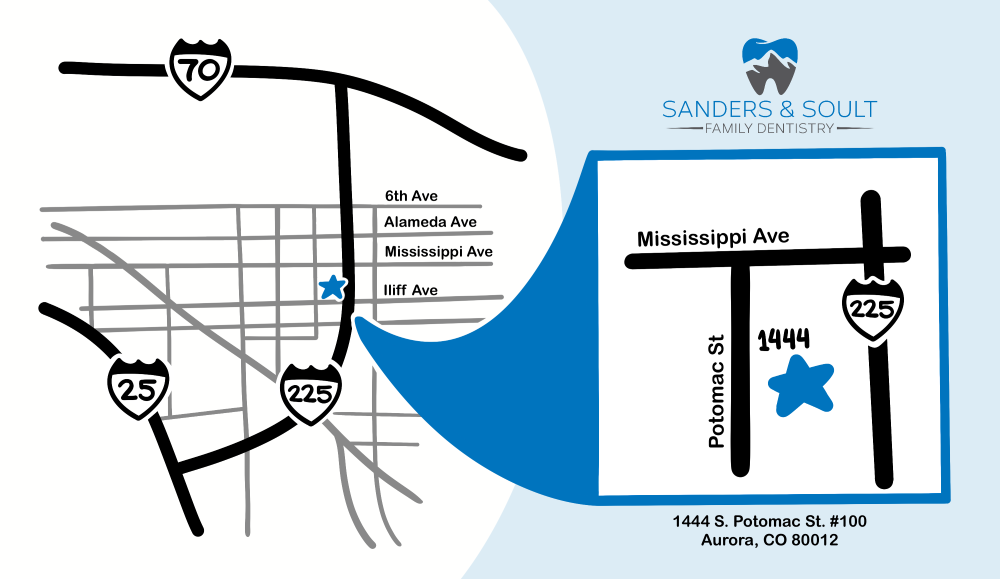Dental bridges are a tooth restoration option that involves bridging the gap between two natural teeth with an artificial tooth, essentially making a teeth bridge. If you are missing teeth and considering tooth replacement, contact the Sanders & Soult Family Dentistry team to explore your options, including dental bridges.
Dental Bridges
Dental bridges use the natural teeth on either side of a gap to support the placement of an artificial tooth in the middle. The artificial tooth is connected via crowns to the natural teeth on either side. This attachment can be permanent, using dental cement to keep the crowns in place, or removable, using a metal framework or clasp on either side of the supporting teeth.
Missing Teeth
Missing teeth result in:
- Deterioration of the gum and jawbone below the gap
- Shifting of adjacent teeth
- Misaligned teeth
- Weakening of the facial structure
- Impact on speaking and eating functions
- Additional damage and tooth decay
- Increased risk of gum disease
Benefits of Dental Bridges
Benefits include
- Preventing deterioration of the gums and jawbone
- Even bite distribution between all teeth
- Strengthening the facial structure to improve your smile and speech function
- Preventing misalignment
- Restoring the full chewing ability
Types of Dental Bridges
Dental bridge casts consist of precious alloys, non-precious alloys, porcelain, or a combination of all three.
A traditional bridge is the most popular type of bridge. It uses crowns affixed to supporting teeth on either side of a gap in the mouth.
A cantilever bridge is an option in which there is only one supporting tooth adjacent to the gap that connects the bridge via a crown.
A Maryland dental bridge is one in which two abutment teeth support the artificial tooth, similar to a traditional bridge; however, rather than attachment via a crown, the artificial tooth is attached to the supporting teeth via a framework of metal or porcelain on the backside of the abutments.
An implant-supported bridge uses implant posts for every missing tooth. The artificial tooth and bridge are attached to the posts, securing them in place.
Placement of Dental Bridges
Installing bridges is relatively painless and straightforward, but it takes multiple appointments.
The first appointment involves evaluating the missing tooth gap and supporting adjacent teeth, creating molds, and taking measurements. A temporary bridge is put in place until the permanent bridge is available.
The next visit will fit the new permanent bridge, making adjustments to get a proper fit. The adjustment process may require more than one visit.
Once adjusted, the crown is permanently put in place using dental cement.
Care of Dental Bridges
Bridges can last up to 15 years if taken care of properly. Proper care involves regular oral hygiene to maintain the health of the surrounding teeth and dental visits at least twice a year. A dental bridge is only as solid and reliable as the teeth adjacent to it; therefore, care of all remaining teeth is essential.
If you are considering tooth restoration with dental bridges, contact Sanders & Soult Family Dentistry today at (303) 337-2794 for a consultation and review of your options.
Book Your Appointment
We always accept new patients and can’t wait to meet you!

